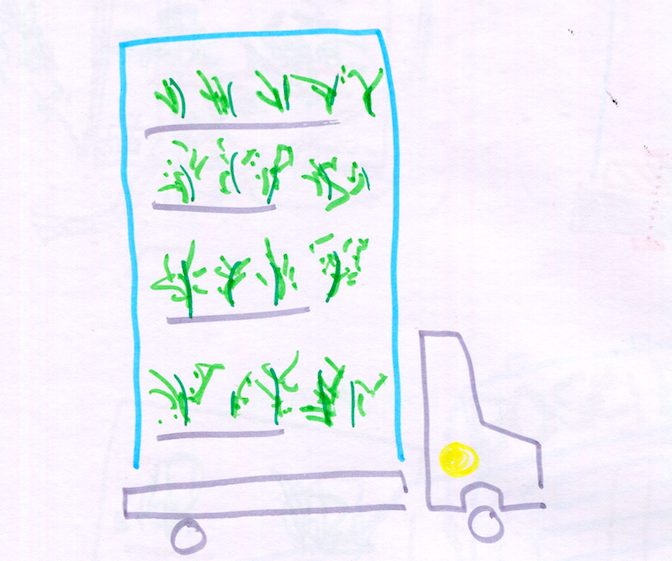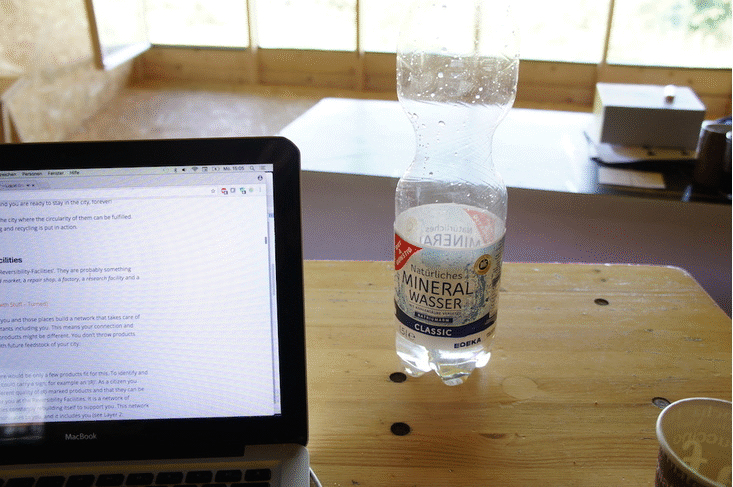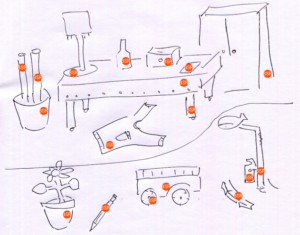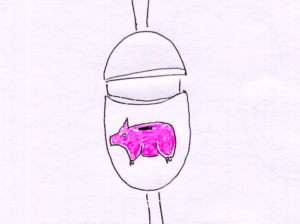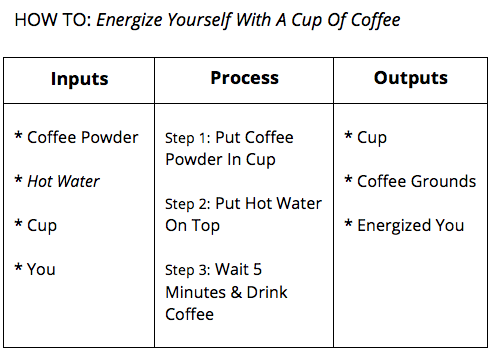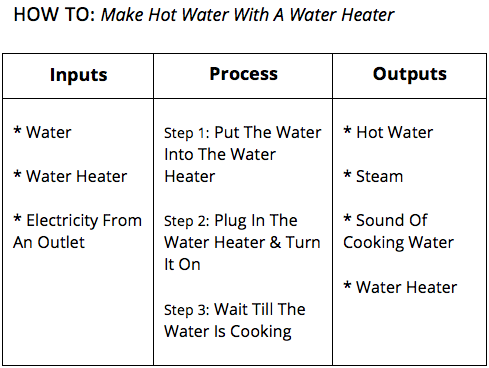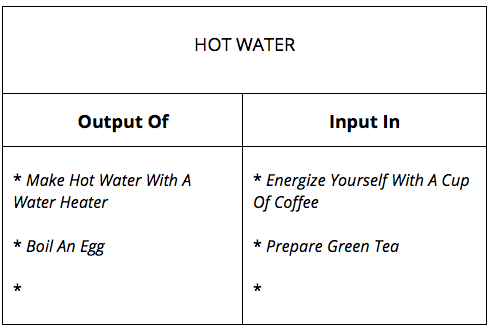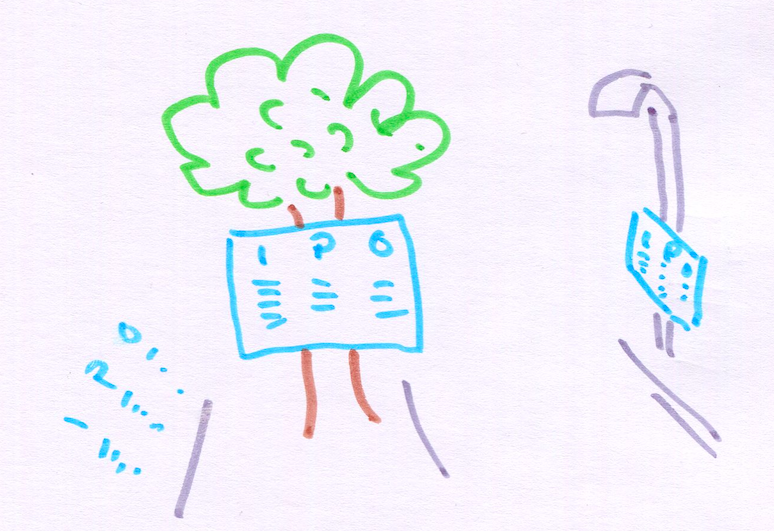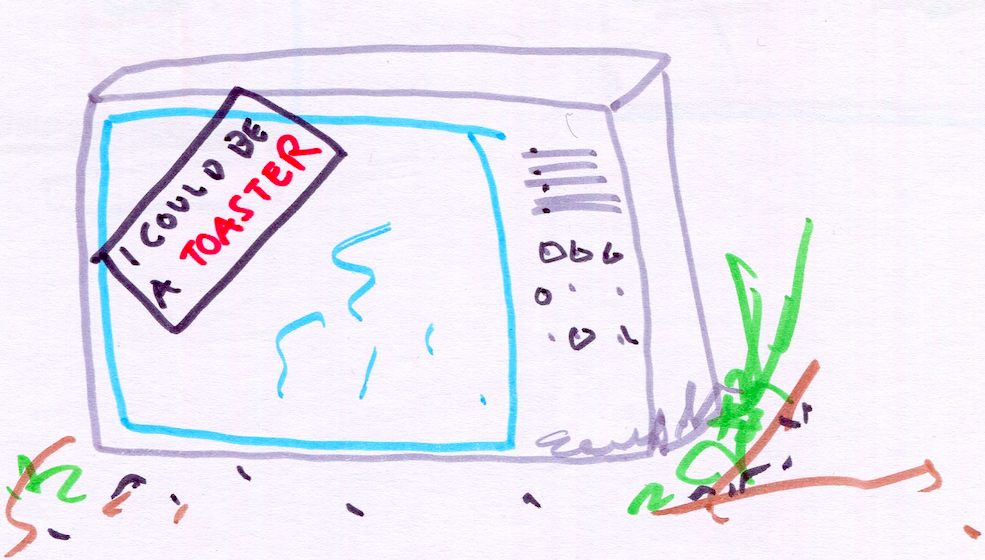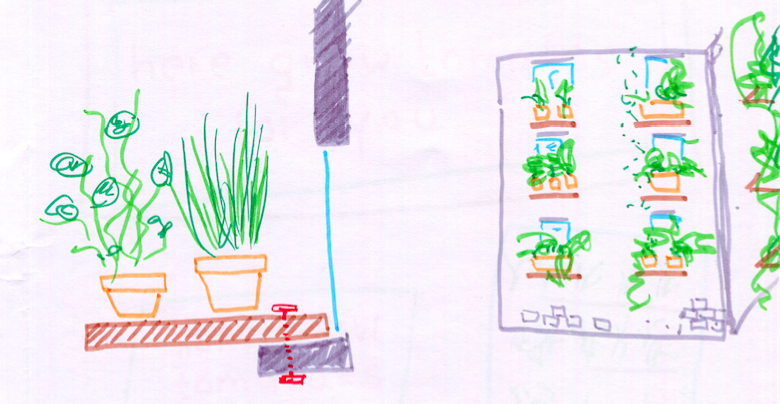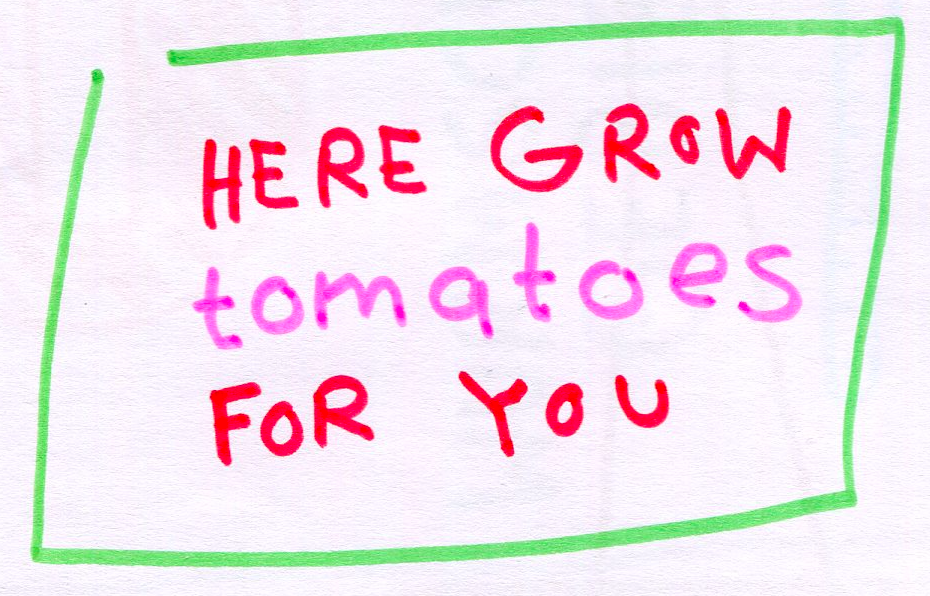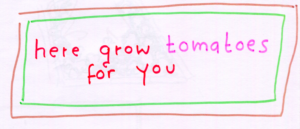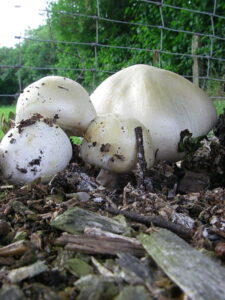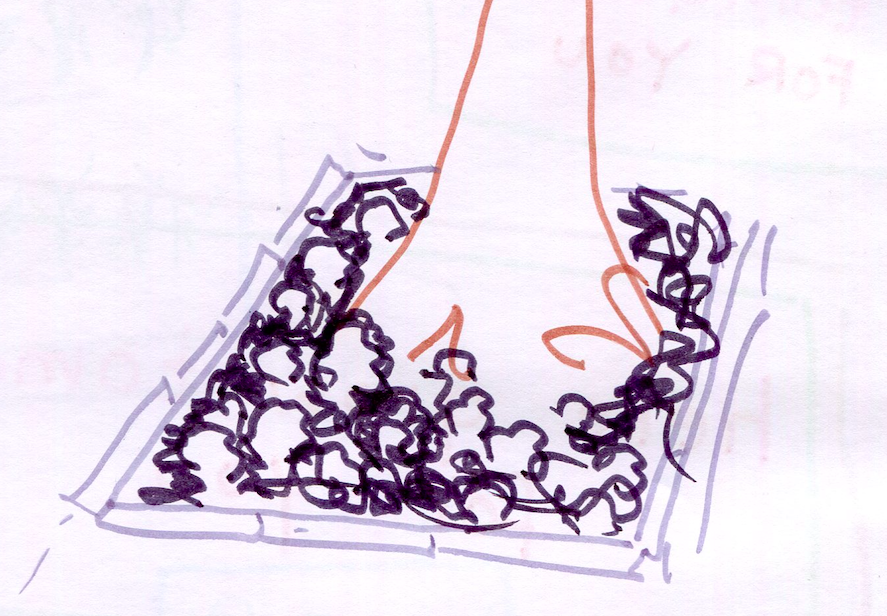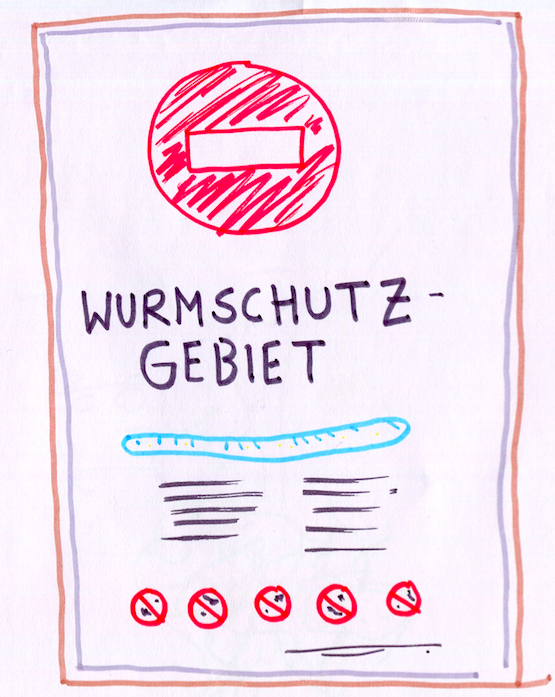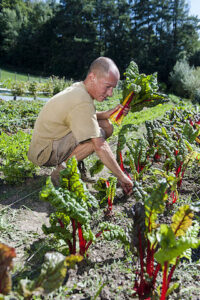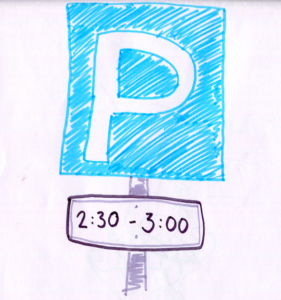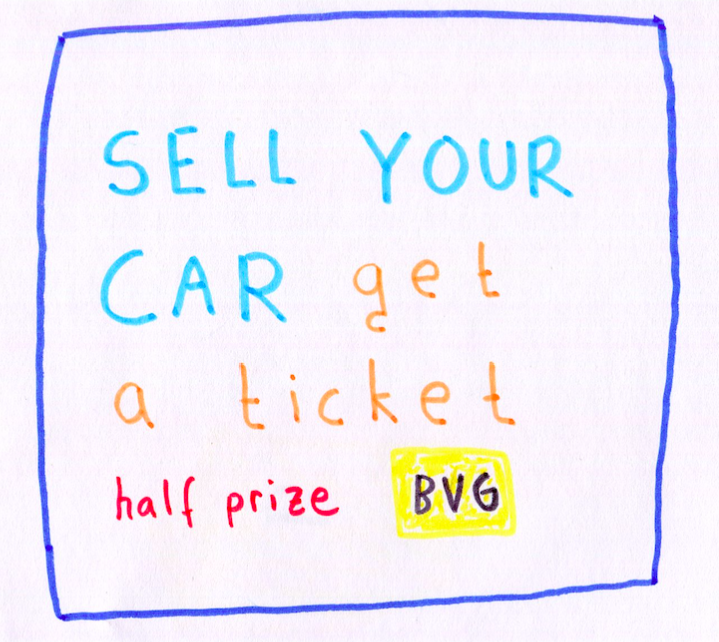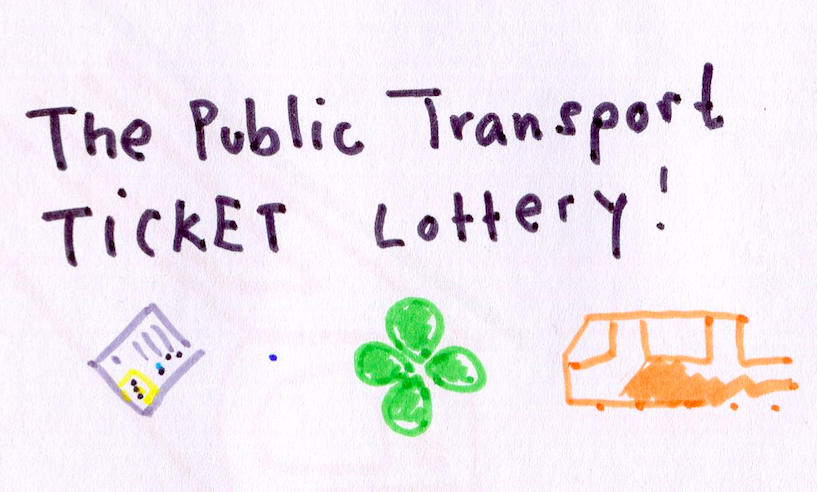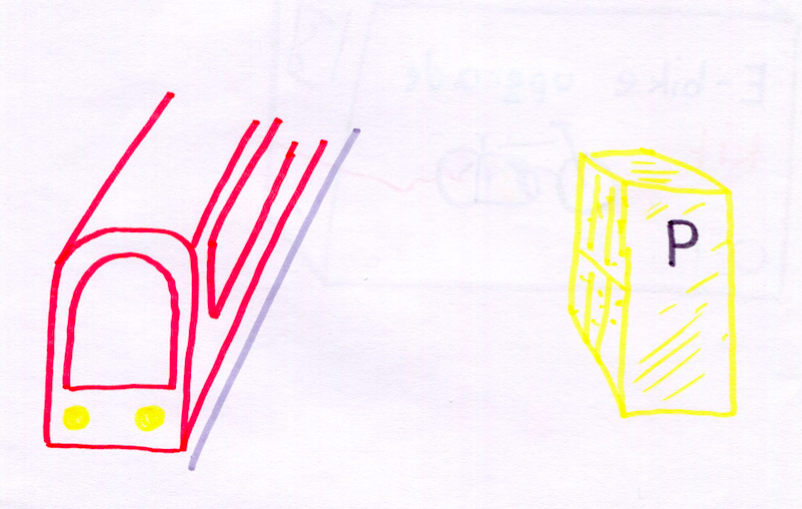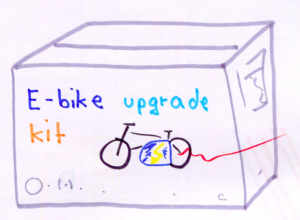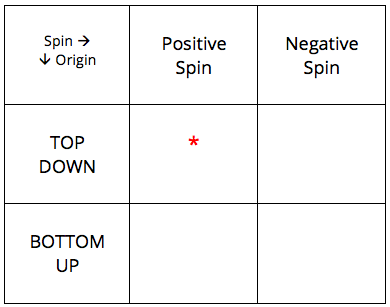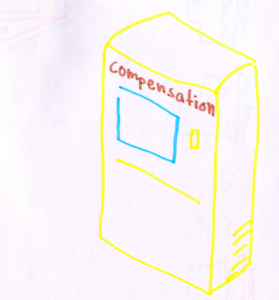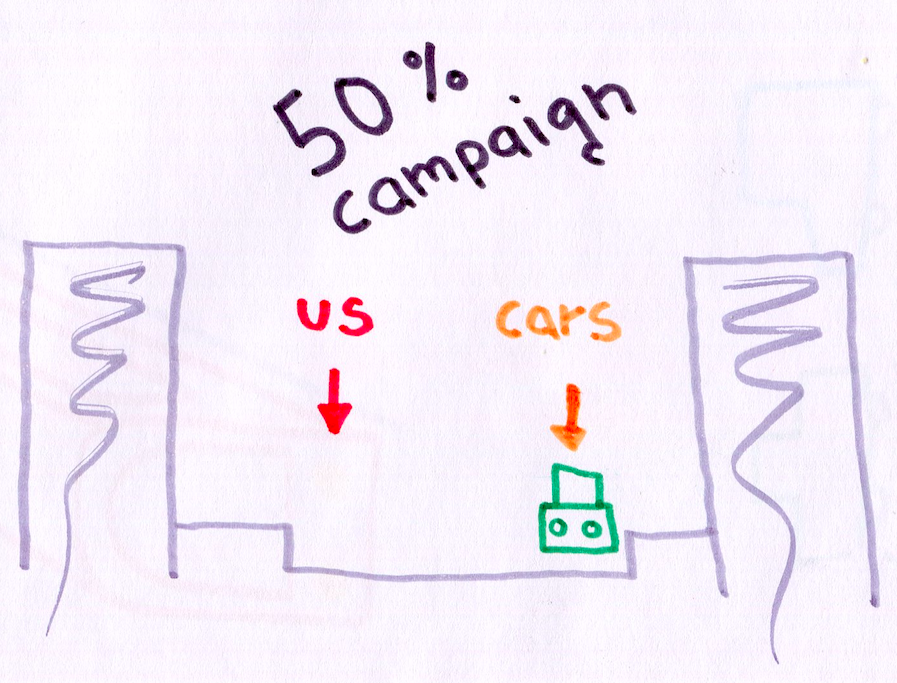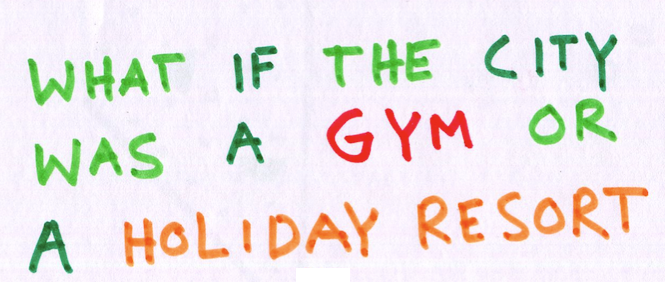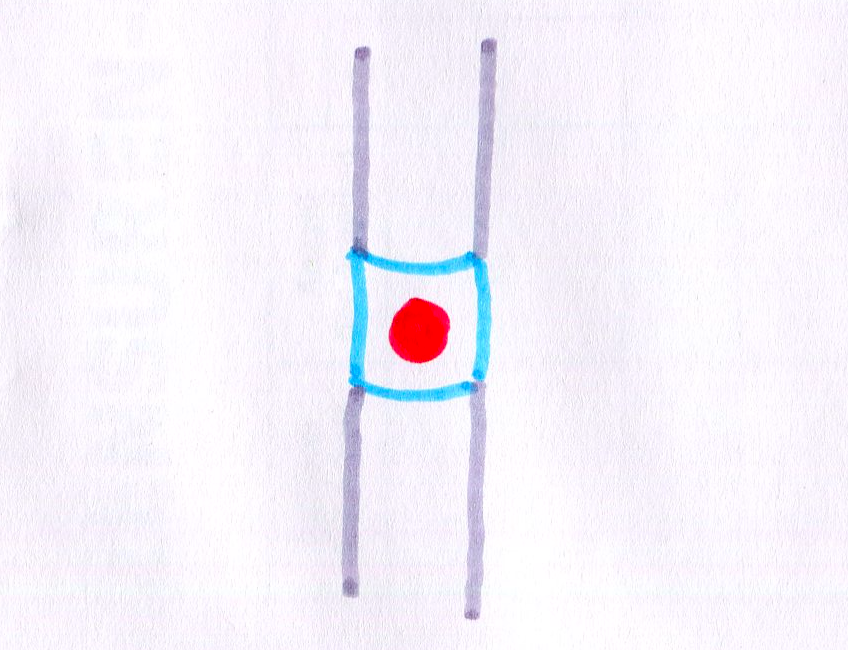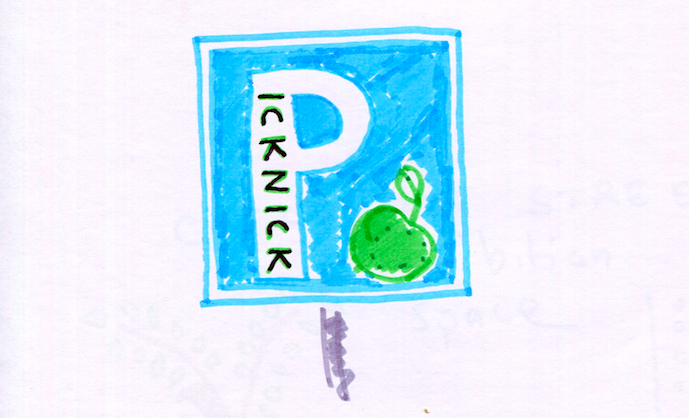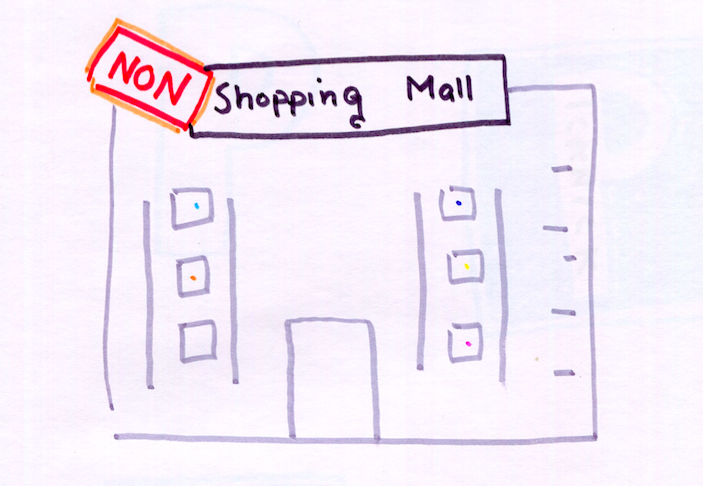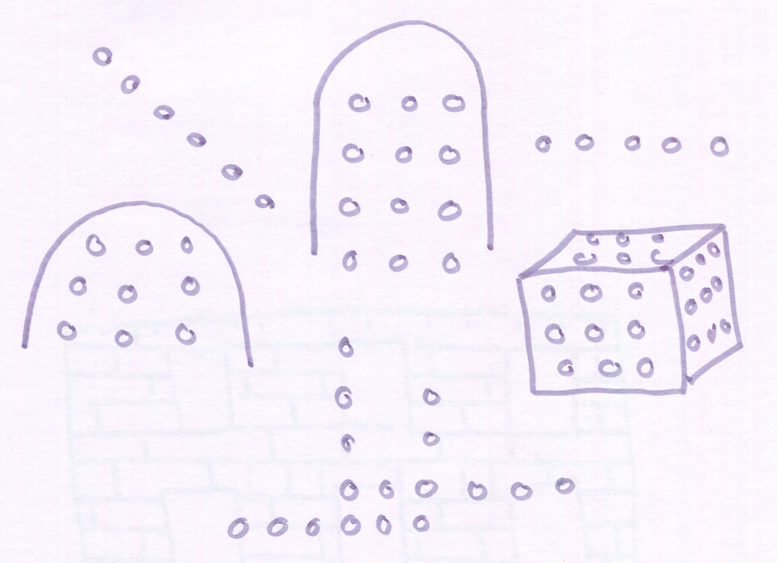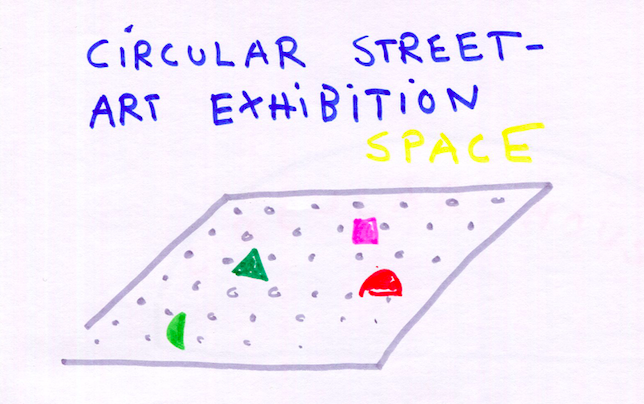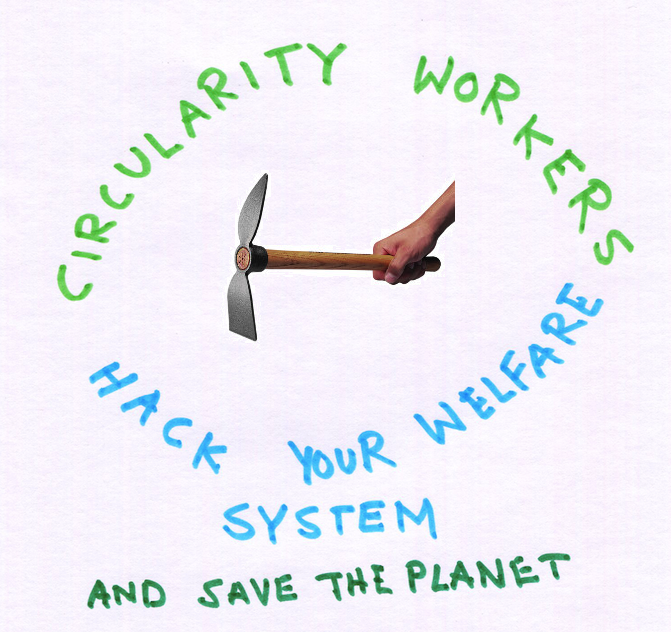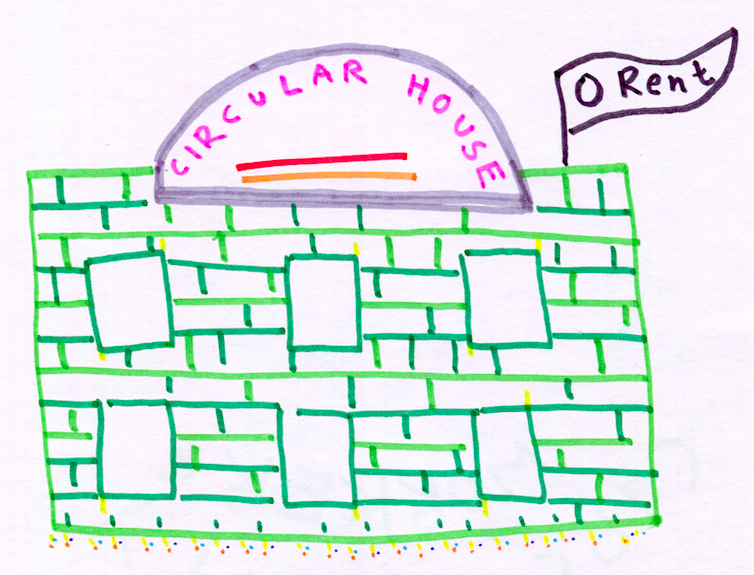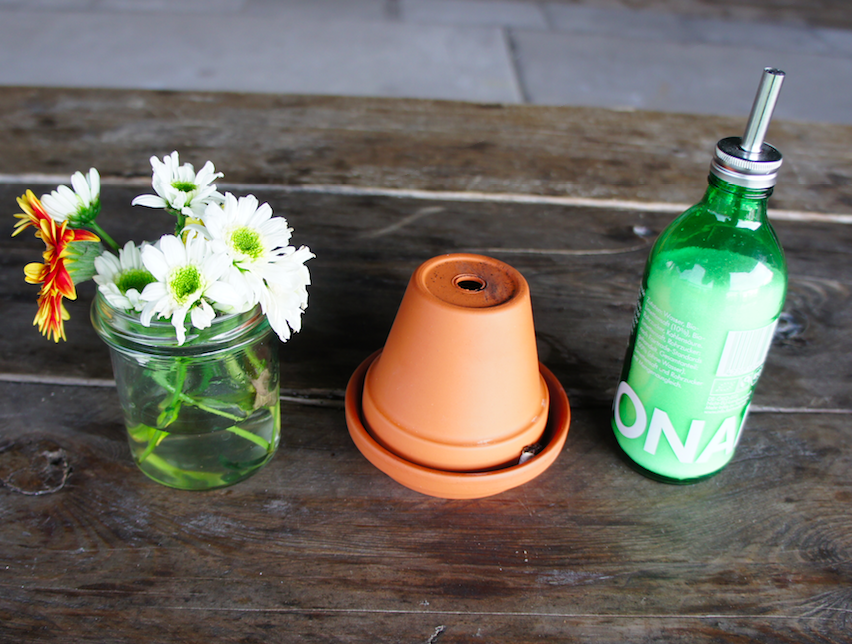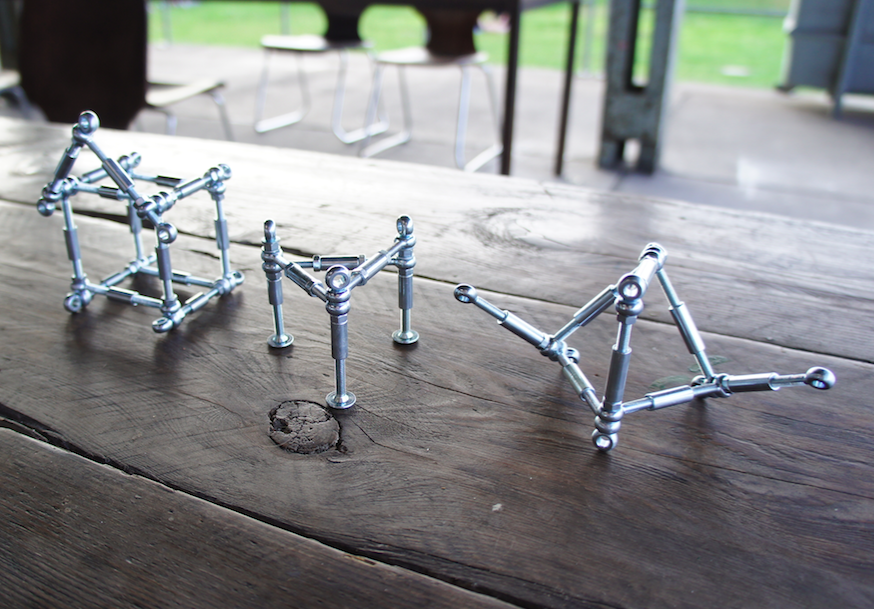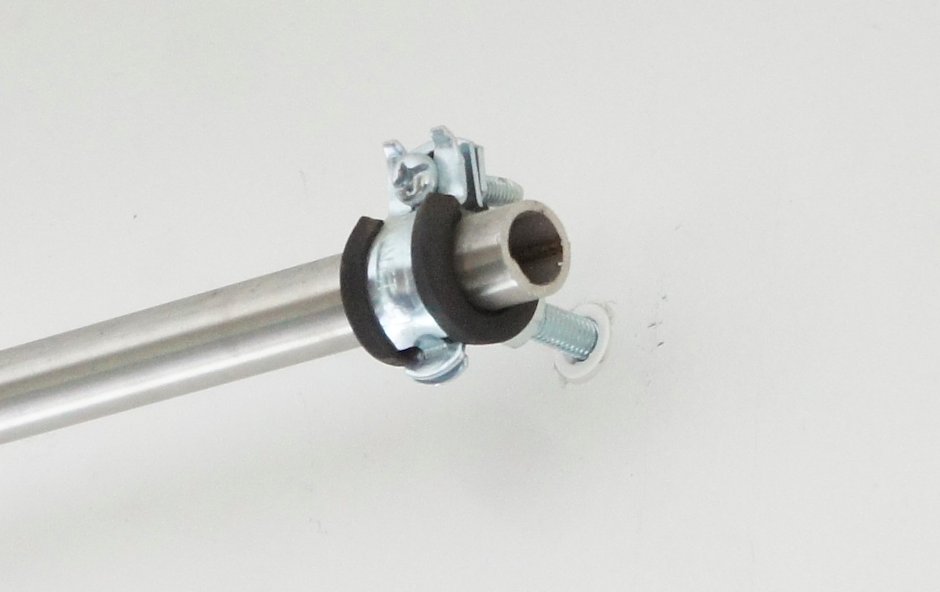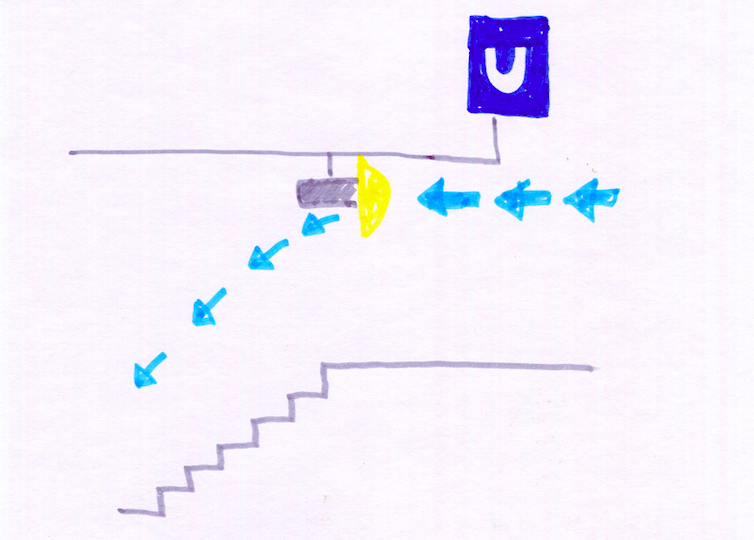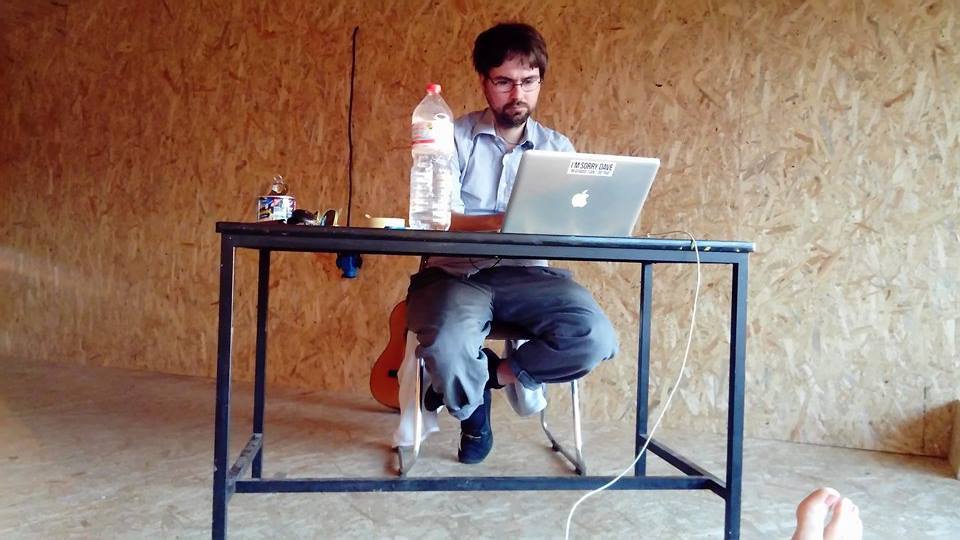Title: Open Source Circular City – A Scenario for Circular City Hackers
What: Article
Funded by: ZK/U
–
This open document collects research on hacking cities for circularity. It was created during a residency at the ZK/U Berlin in summer 2017. It contributes to Mifactoris city hacking program “Hackers Closing Loops”.
Have fun ↓
°
Introduction
A hacker needs to have an idea where he or she wants to go.
We want to get to a circular city. So this document tries to imagine a circular city to be able to find hacks that create a shortcut to it.
*
What circular city?
There is not just one vision for a circular city. The political process that will shape it has just begun. Some people share visions where everybody is surveilled and controlled by infrastructure set up and run by big corporations. The scenario below is supposed to set a positive utopia against that.
*
7 layers
The scenario consists of seven layers. Each layer is about a selected aspect of the city. You can think about each layer individually or combine them to find more details and ideas about life in the Open Source Circular City.
- Reversibility Facilities – Where to (re)process products?
- Transparency IPO – How is circularity enabled with communication?
- Nature & Food – What is the role of the biosphere in the city?
- Mobility – How do space and supply work?
- People – How people spend time and create social structures?
- Products – How do circular products work?
- Buildings – Can buildings support circularity?
*

The inspiring place at ZK/U where the scenario development was started.
*
*
Layer 1
–
1 Reversibility-Facilities
Wherever you read this right now: Look up and look at the products around you.
Imagine that they are all designed circular. They:
- are made to be repaired,
- consist of parts that can be – and will be – reused and refurbished,
- are composed with fully recyclable materials!
Great. Those atoms around you are ready to stay in the city, forever!
Now we need places in the city where the circularity of them can be fulfilled. Where repairing, reusing and recycling is put in action.
*
Reversibility-Facilities
Let’s call those places ‘Reversibility-Facilities’. They are probably something between a second hand market, a repair shop, a factory, a research facility and a Fab-lab.
(R) – Reversibility facilities spread across the city.
The products around you and those places build a network that takes care of the city and its inhabitants including you. This means your connection and responsibility to the products might be different. You don’t throw products away. You interact with future feedstock of your city.
At the beginning there would be only a few products fit for this. To identify and separate them they could carry a sign, for example an ‘(R)’. As a citizen you know about the different quality of (R)-marked products and that they can be fully reprocessed for you at the Reversibility Facilities. It is a network of products and facilities constantly rebuilding itself to support you. This network is visible and communicates to you, and it includes you (see layer 2: transparency). ‘(R)’ is a message of opportunity!
ACTION: Create stickers with a fake-(R)-certification and go out to the city and mark products in one spot with it. Set up a basic website about Reversibility-Facilities and add the link to the sticker.
*
Details
A few details.
- Database also with unregistered things: There are products in the world today that are already circular. If the Reversibility Facility finds out how to circulate them properly they can put them into the public database of (R)-fit products. You can look up for your products if they fit and how to circulate them.
- Openness / Open Source: Openness (Open Source) plays of course a huge part in this (see also Layer 2: Transparency). The product information must be open to allow the reprocessing and reusing across cities and facilities. Maybe you can get your (R) certification only when your product is open? But, yes, maybe … if you thrown in a huge pile of lawyers, complicated contracts, meetings, confidentiality agreements, extra-code, emails, meetings and so on it could be possible to arrange an (R) certification also for a closed source product. But it would be much more expensive to get your (R) probably then. And it might turn out to be impractical or impossible.
- Collecting It: How do things get to the Reversibility Facilities? Large objects and products you could probably resell there. A deposit system is something that might work for some things. Smaller stuff you could collect in ‘reversibility bins’ and the city allows Reversibility Facilities to ‘harvest’ those bins.
Install (R) bins in public space next to actual bins. ‘For completely recyclable/circular things’.
Alternative idea to the one above: Take the logo of your local waste management company and turn it into a sticker: ‘Future property of – Company Name –’.
![]()
Resource-Piggybank stickers on public bins.
*
And Now?
How do we get it on the road?
The layer asks for complex infrastructures and networks probably unlikely to be installed top down! But maybe you can start this small and bottom up also? How about:
- A network: A group of companies with circular products could join forces and set up a first small Reversibility Facility for their products. That facility runs marketing campaigns, offers consulting and helps other companies to put their products into the network. Maybe this is easier to start with products with shorter life-cycles. Combine it with a crowdfunding campaign to get it on the road and more importantly get attention for it.
- A large company: The first Reversibility Facility could start with research: Put already existing circular products into a public database. Start with bio waste and grow it from there. This could be piloted by a waste management company in a large city. They just add extra experiments. And sell the knowledge how to set up a space like that afterwards. The City Factory by BSR (Berlin Waste Management Company)!
*
*
Layer 2
–
2 IPO Transparency!
Bear with me. This might look a bit complicated for a moment. I was looking for something that would be quicker to explain. But the IPO model is still the most convincing idea to me! So it is worth it:
*
Transparency!
Transparency is key for circularity. To repair, reuse and recycle products and structures you need to be able to find out how they are made. But what is a good universal format to make things transparent in order to support their circularity? The IPO model might be the key. Imagine the following as a very simple software as easy as the Google search bar:
*
IPO model
In the IPO model you use a table to describe how something is made. The table has three columns: Input, Process & Output. An example:
A complex process or product can be described with several tables linked to each other. Where does the hot water in our example above is coming from?
.
.
As you can see in the example the trick is to list also all (!) Outputs. Because in an IPO system you can look up for each Input and each Output in what other tables it is used.
*
.
This allows you to discover unexpected uses. Alternatives to wasting it become visible. Did you know that you can use coffee grounds to grow mushrooms or produce cups for example:
.
With a system like this you can identify circular solutions quickly.
The more people use and feed this system the more solutions will pop up. And the faster we can identify problems. Which ingredients and processes always lead into a dead end (a landfill or toxic waste for example)?
You can click yourself through the tables and go into infinite depth how something is created. Water is an output of burning Hydrogen for example and hydrogen is an outcome of supernovas. Go and pick up the basics whenever you need them.
There are many ideas what you can add to a software with this basic functionality.IPO is the ultimate MacGyver-Tool. It enables us all to engage creatively with a circular built environment and open data about it! But for our scenario and the transparency question its enough. Let’s just assume there is an IPO representation about everything! It would be transparent how it is made and what you can do with it for everyone including the Reversibility Facilities!
It is important to add that the IPO representations talk about a product in general! Not about individual copies of it in individual households. IPO is not surveillance system! You are free to do with your stuff what you want to. IPO just brings up suggestions.
Augment the city with IPO! Put a glas window on a tree and describe the tree with IPO. Do the same with other things in the street or write directly on them. (Add the logo and link to the software as well.)
(Critique) Find garbage in the street or take it out of containers and write very big the name of the company that has produced the item on it. Place it prominently and ugly looking in the street. Take a picture and post it in social media!

Create a shield or sticker to put on things you find in the street: “I could be a …” and add what makes sense.
*
And Now?
How do we get it on the road?
We are on it 🙂 There is a basic and very raw prototype ready and a team that wants to continue to work on it. We just need a little bit of funding to develop it properly. You can help us to fund it or build it or just take the idea and start to work on it yourself.
*
*
Layer 3
–
3 Nature & Food In The City
Nature has to play in an open and circular city many different roles. Two angles to look at it:
*
Food
If we grow more food directly in the city we can reduce transport and energy consumption. Companies will explore urban gardening more professionally and scalable. Someone told me that there is a company in Berlin growing editable mushrooms in cellars for example and farmscrapers/vertical farming is at least a popular idea.
Enlarge the board on your windows on the outside of the building to have more space to grow things – The inhabited farm-scraper.
Transform a car into a large and prominent greenhouse and park it in your street. Put a brand on the outside that is related to your street – so people will like it more/identify with it. Research the minimal ‘vehicle’ requirements to be allowed to use a parking space.
(Critique) Create signs “Here grow strawberries for you” and put it on parking cars in the city.
It is pretty easy to make foam used in construction look like mushrooms. Plant mushrooms in your street. Use really dark and clean soil. The champignon farm outside your door.
.
Diverse Biosphere & Education
Nature is good to teach people about circularity and makes also a great social catalyst (see layer 5). Less cars in the city means less toxins and more space to foster a richer biosphere. Let’s turn the city as a colorful botanical garden! The transparency systems we will run to support circularity in our products (see layer 2: transparency) can also be used to make the processes in our biosphere visible and therefore offer us new ways to interact with it and connect to it.
Put sign up in quiet streets like you see in a national park a nature protection zone. “Worm protection area”, “insect breeding zone” etc.
Transform the city into a botanical garden. Put signs up with latin names of the cities vegetation (1 / 2). / EXTENDED: Write and upload a kit about how to create sustainable circular signs to that people can do the same thing world wide – and it can become a movement.
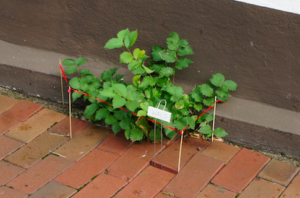
*
And Now?
How do we get it on the road?
The urban gardening movement has produced a lot of knowledge and solutions in the past decade. Now it is time to professionalize this and make it scalable. There are a small number of companies approaching this right now. One not very well explored idea how to do this is shared here on our page: The Urban Food Gardener Startup.
The urban food gardener startup.
‘City Strawberries’ make a good marketing campaign for everyone who advocates for a sustainable city.
*
*
Layer 4
–
4 Transport, Mobility & Space
The car free city is already a popular idea. Cars are one of the most unsustainable things regardless if they run on fossil fuels or electricity. Cars consume resources, cause emissions, steal space and they transform the space between our houses into dangerous death zones!
But there is hope. Some research is predicting that the combination of car sharing and self driving cars could allow us to get rid of 90% of all cars and maintain the same amount of car mobility. 95% of its time a car just parks! And there is lots of room to make public transport and alternatives like (e)bikes better and more attractive. Shanghai shows us how to do it: Make driving and parking a car in the city crazily expensive and create also other incentives for a car free life. Imagine how much free space this would create.
So the vision for mobility in this layer is foremost a vision about a city with less cars and a lot of free space to be used for example by nature (layer 3) or people (layer 5) or for activities that will allow to decrease our need for car-mobility in the city even more.
(Critique) Put incomplete chalk drawings like from kid on the street and next to it the outlines of a dead body like on a murder site.
*
And Now?
How do we get it on the road?
To some extend this is a question about changing public opinion about cars. Here are some ideas how to do that. Combine them to get even better results:
- Politically: Maybe a bit harsh, but in general possible – Raise taxes for using a car in the city is something politics can do. Raise fees for parking cars is another: You should not just pay for parking in shopping areas but everywhere including in front of your house! Put down the speed limit is a third thing: 20km/h or maybe even 15km/h! Make it painful and senseless to drive your own car in the city. Running campaigns is a fourth thing politics could do. Reduce the number of parking spots to make driving a car an even bigger pain in the … In general: Owning and using a car in the city should face the same destiny as smoking in public spaces or smoking at all – it is something bad for your health and the health of others – impolite and egoistic!
Hack existing Parking spot signs: “Parking only allowed from 2:30am – 3:00am”.
Add signs to the street. Make it even just 5 km/h per hour. 🙂 Make them look like street art or like they were created DIY by parents!
.
- Improve Public Transport & Bike Riding: Make public transport more beautiful, more comfortable, more spacy or more fun. / / Walking and bike riding could be supported better also! Here is a funny example of a project proposal from Berlin called RadBahn that points to better tracks for bikes.
How about a campaign by the public infrastructure company of a city: Get a 50% deposit for a whole year public transport ticket when you sell your car! (You proof that with your tax sheet – no tax anymore for a car.)
Another public transport campaign: Each ticket transforms itself into a lottery ticket. You can win a prize. (A friend of mine told me that there are examples where this idea was implemented.)
.
- Reduce, Avoid, Hack: If we make smarter use of the systems and infrastructures already in place we can substitute even more cars. How about using train tracks for other vehicles, how about delivering packages with the subway, how about a kit to transform every bike into an e-bike? How about + + + ?
A lot of car traffic in cities today is package delivery from online purchases. How about adding an extra wagon to the train to deliver packages? On the platform is a packet station. So you’d go to your closest subway station and pick up your package.
Upgrade bikes to e-bikes.
- New Uses Of Space: Cars have been occupying the space between our buildings for a very long time. Most people never saw this space! And so they never created ideas what to do with it. Therefore using it for parking cars seems natural and unchallenged. To put ideas for this space into peoples head is important for change. Show people what is possible! Parking Day is an international movement often presenting ideas: Turn the city into a gym, a playground (Layer 5), a botanical garden or field (Layer 3) or?
- Campaigns: Campaigns can play a role in getting the public connected to the idea of a car free city. Campaigns can be created bottom up by grassroots, artists or activists or top down by large companies or even the state. Companies that run public transport systems or provide car sharing could have the interest, reach and money for impactful campaigns. Campaigns can focus on the negative side of cars in the city or on the positive side of a car free city. / / * Campaigns run by big companies and focussing on positive aspects will probably have the strongest impact – also on politics! (The car lobby is strong and those who are in power are not often seen in public transport. It’ll take big companies to step up here.)
(Critique) How long are cars in your street occupying space without moving? Find out. Use chalk to mark where they are staying and write down the colour and brand of car. So everyone can see what is changing and what not.
(Critique) Set up a fake parking ticket machine and write on it about “compensation fees for taking away the beautiful place on the street from children and adults for better uses.”
- Openness! Or: HowTos: While maybe campaigns need to be run top down for strong impact it is still the citizens who need to occupy the space with alternative ideas after all! We need available tutorials how to install and run new uses of the space. Those will also involve administrative work and dealing with government and regulations. And it will involve teaching or encouraging people to hack things! Activities from here will feed back to all of the above.
Let’s free the space one step at the time! How about allowing cars only to park on one side of the street and free the other side up for alternative uses – climbing frames and so on. Do a 50% campaign for your street! / This project would involve to create a 50% campaign kit and tutorial which would allow every street to run a campaign: start to collaborate and get politically active to make their street a 50% street. Bottom up change!
*
*
Layer 5
–
5 People
A good part of living in a sustainable circular economy is to consume less and as a result of this produce less. Throw in automation and AI and we have a lot of people out of work with free time to explore different things.
Maybe from an understanding of the biological and technological ecosystems a greater sensitivity for our body will enter the bigger mainstream: Yoga, sports, walks, healthy nutrition become even more popular. We can spend time to repair things or create/make some of them ourselves. Go for long walks and explore your city or even a whole country! I am sure people can find good ways to spend time in sustainable ways.
*
‘Obligatory Passages’ or: Maintaining Democracy In A Digital Age
When people can decide for themselves what they do, where they go and who they meet what will happen? The internet showed us that people have the tendency to lock themselves in to ‘filter bubbles’. If you can pick you tend to chose what you already know about and what fits your world view and comfort zones. People feel best amongst people that are like them!
Work life on the other hand makes us meet across bubbles! The university professor has an interaction with the package delivery employer at the door. But when a robot is delivering the package where will those two people meet? Will they be locked in to their peer groups if they design their day? For a democracy this could become a problem. How can people reasonably live together in a society and understand each others decisions if they don’t know about each others existence?
But work is not the only ‘obligatory passage’ in our world. School is an important one. Public space is another. To understand what an obligatory passage is think about your school. You had to go there almost every week and meet a very diverse group of people. But after school you met your friends – people that were closer to you. But in school there were all the others too. “Strange People.” But you learned about them. For many people school is the most diverse social setting they were ever part of. Math nerd, art fan, handy person, fashion freak … the smart and the less smart all on the same school trip in the woods. A miniature version of a complex society.
How can the city organize public life in a way that citizens meet across bubbles? A good way to do this is to create ‘obligatory passages’. The new public space offered by car free streets (see layer 4) is a good place for them. Make people do things in public! And let them do it in an open fashion! Yes. Openness is key here as well! Put a sign up next to your yoga class when the class will be open and new people can approach to ask questions and so on.
The Reversibility Facilities (see layer 1) could make a good obligatory passage for example. Maintaining our shared circular infrastructure together.
.

Turn the city into A Gym or A Holiday Ressort, or a … (more: How to do city hacking) Invent a discipline, run a different tournament each week in a different street each week…
Add signs like on hiking trails all over the city. A place to discover!
Picknick instead Parking.
A non-shopping mall to discover and test all kinds of fun activities that aren’t shopping things. (I am sure there must be examples for this idea. If you know them pls. send and email.)
v
The Circular Street Art-Exhibition Space! Street Art can be made circular! We already started a little guide about that HERE.. Imagine a space in the city that is equipped with opportunities for circular street art. Nothing goes to waste! Everything can be reused creatively. Artists or other creative individuals are invited to set up a new configuration every now and then. Like a big collection of Lego Bricks. / Maybe several spaces like this exist and exchange equipment and so on. How to design such a space and make it run? Can we take an existing space in the city and use it like that already through organizing over the internet? Guerilla-Transforming!
Billboards for repairing things. Repairing is cooler! / more
*
And Now?
How do we get it on the road?
Following what was said above: Design obligatory passages, try to make them inclusive and let people run activities there in an open fashion. And make those obligatory passages about not consuming!
But other than that: To explore circularity people need a lot of free time they can use guilt free and out in the open to develop new resource light ways to give live a meaning. But our society isn’t ready to grant this. So currently it is about small steps to free up time and make experiments and invent work free sustainable resource light lifestyles our culture will accept. Here are things to do or that would help:
- Politics 1 – Rent: Rents might become the biggest problem! In most cities rents are already to high to explore a resource light life with unpaid work on a basic income for example. When only full time and hard working people can afford to live in a city, the sustainable circular city and living in it won’t be developed. The permanent increase of rents need to be stopped and positive examples need to be supported. Not just for the circular city. (See Idea ‘The Circular House’ below for more!)
- Politics 2 – Basic Income Vs 0.1: In Germany we have a social security system: If you are out of a job for a long time you’ll get support by the state called “Hartz IV”. This pays for your health insurance, gives you a bit of money for your daily expenses and covers your rent (if it is not too high). But people on Harts IV get a lot of pressure from the state! So there is no room to openly explore resource light lifestyles and put a positive spin on it. Putting away this pressure would be a good first step. Maybe you can hack this yourself? (See idea below for more.)
This won’t work everywhere. But in Germany, where I am located, we have a welfare system called Hartz IV. You get basic financial support from the to cover your daily expenses, rent and health insurance. It is not much. But if you don’t have a resource intense life-style, like a circular one, it can be enough. Use it to become a ‘Circularity Worker’. Life a resource saving lifestyle, live a happy life without lot’s of stuff, and talk openly about it, blog about it, present it on the street. Set up a forum where circularity workers can meet and help each other to invent their life and deal with the state (welfare system). Put a positive spin on working less and receiving something like a “basic income” already. | A good way to start this as a hack is to set up a website and a forum for it, print flyers and hand them out infront of the Jobcenter (The place where you have to go from time to time if you receive welfare from the state). /// Those people are already living this life’s. But they can’t talk openly about it and can’t put a positive spin on it. Let them be heros and researchers!
- Job Sharing: Job Sharing is already something people do. You split one job in two half time jobs for two people. In cities many people look for jobs that are only part time. Hack your company! Explain it to your boss. Invent workflow that allows job sharing.
- Campaigns: Hack Your Life: There are already campaigns and there is fantastic material out there from activists and NGOs showing people how to have and consume less and life a better life. Repair things with IFixit for example. Or live without plastics. But there is always room for more.
The CIRCULAR HOUSE is a project supported a real estate company or a tycoon that want’s to do something good for the world. As a resident you pay a very small rent or no rent at all. You become a resident by applying with a ‘project’. The project is a certain sustainable and circular life-style! You explore it in an open fashion: you blog about it and create tutorials so that others can do the same. Once accepted you are allowed to stay for 5 years in the house. Projects like this could be spread across the city. Hack into the heart of a real estate company or house owner to get this project off the ground.
*
*
Layer 6
–
6 Products / Things
We spoke already a bit about products in layer one and two: They are circular designed and transparent, and this means they communicate to me and include me differently through their transparency.
A good way to approach circular design is modularity. We might see a lot more modularity. And an interesting path to explore modularity and hacking is: ‘PreUse’.
*
‘PreUse’
I want to introduce you to the term PreUse (created by ReFunc, look also for PreCycling, from Umschichten). PreUse means you use a thing or product for something other then intended but you leave it intact so the initially planned use is still possible. Examples:
A jar as a vase or coffee cup to go. A flower pot as an ash trade. A deposit bottle as sugar dispenser.
‘Hugo’ – a PreUse modular toy construction kit for kids (using regular nuts and bolts) developed by us on the side while staying at ZK/U.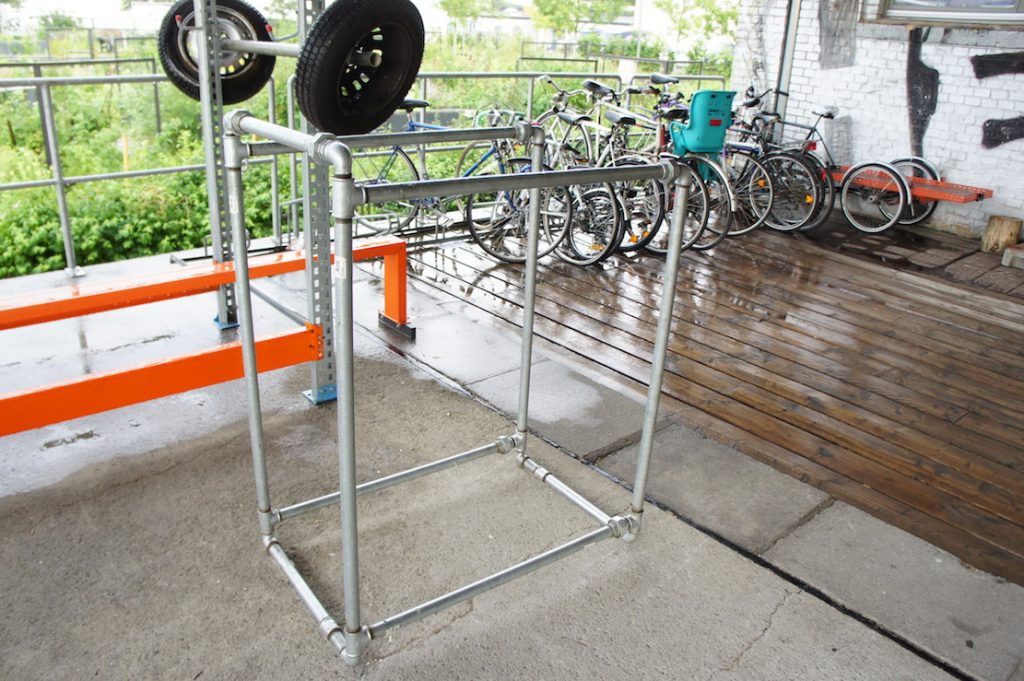
A frame from pipes and car tires as gym equipment. Found ZK/U Berlin
A pipe holder from pluming to support atelier curtains. Found @ZK/U Berlin
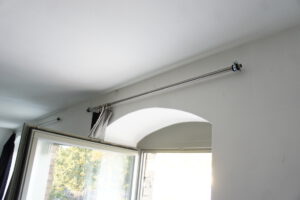
Some examples of PreUse are good hacks! They point to circular modularity that is already there and ready to use! And it can give us an idea for how some things will look and work in the circular city. Less objects and parts in the city reduce the complexity for the Reversibility Facilities (layer 1)
In one of the example above the pipe holders are perfectly designed to work as pipe holders. But as curtain holders they are a bit ugly. It is just a tiny step to change the design so that the object has the perfect look for both jobs.
Some more examples of PreUse? Contribute to a bigger collection here!
*
Excursus: Packaging
Packaging is something many people see and experience everyday – as a garbage problem. So here are some “hacking” ideas how to deal with packaging or avoid packaging in the circular city.
- Restaurants! Going out to eat reduces the need for packaging and allows to use less energy to feed the same number of people. And this helps also with the obligatory passages of layer 5.
- Deposit boxes for more things (deployed bottom up) –> a Preuse mindset
- PreUse & modularity in packaging! Make packaging that can be used also for other things and therefore collected and sold – a PreUse Deposit System (More here)
Read More Here [LINK] or below on slide 25.
And Now?
How do we get it on the road?
We need to start building those solutions one by one and make them popular. And politics need to support this. Campaign for it. Necessary support, inspiration and opportunities (synergies) for this can come from trying to implement the solutions of layer 1 and layer 2.
*
*
Layer 7
–
7 Buildings
I lack a bit of imagination or interest for buildings. But I feel there should be something about buildings in a scenario about the Open Source Circular City.
ReUse is interesting for buildings! Shopping malls can be turned into community centers, parking houses into farmscrapers and so on. When setting up these buildings for their new uses do it with a PreUse mindset. Prepare already for alternative uses after that.
[IMG & HACKS to add]
Dedicate space in buildings for circular processes and activities: Collect phosphate, do wormcomposting, grow mushrooms or other food etc.
[IMG & HACKS to add]
Another interesting questions for buildings or built infrastructure is to find ways to make it generate energy.
Use the wind that occurs between some buildings to generate energy for them.
There are are plenty of ideas for sustainable and circular architecture. Increase density for more efficient use of energy is one I like.
*
And Now?
How Do We Get There?
How about a seal or tax incentives for circular buildings?
*
That’s it! Have fun finding the connections between the layers yourself.
The scenario above is all we were able to develop during our short residency at ZK/U Berlin. The plan is ready. Now let’s find a funding source to do more! Get in touch with ideas, interest or motivation!
